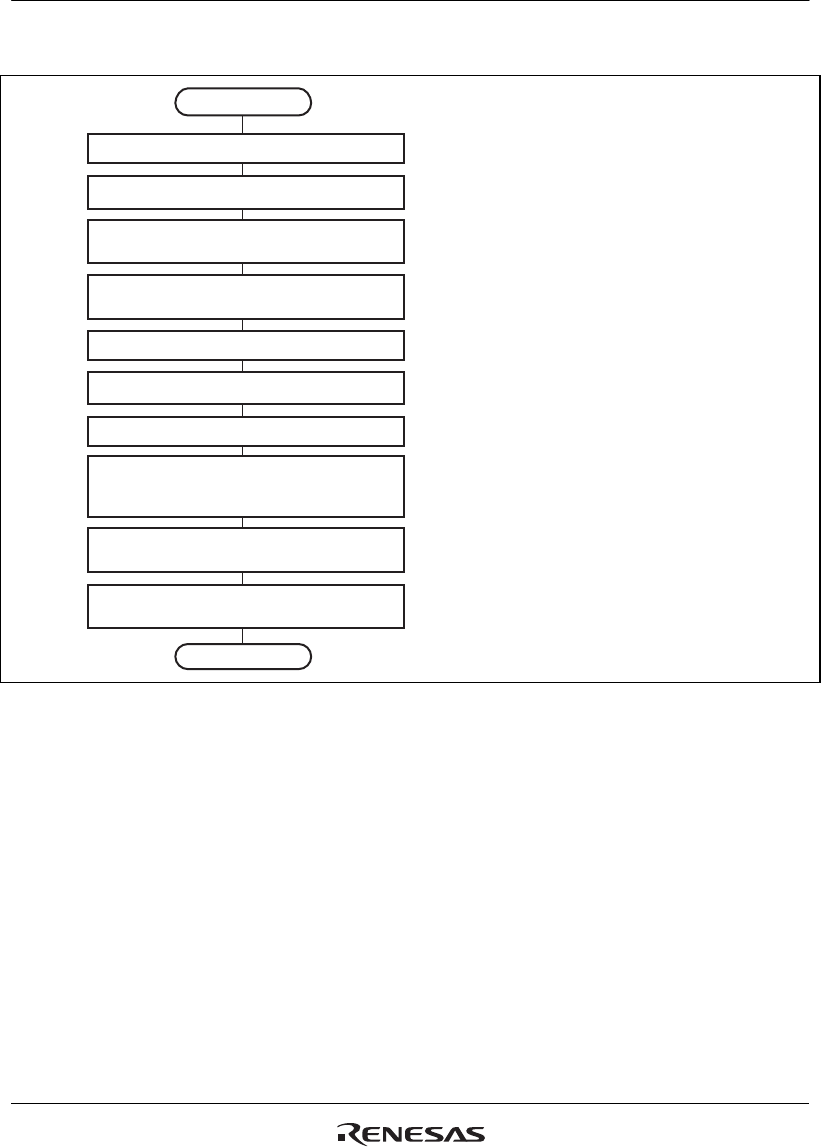
Section 15 Serial Communication Interface with FIFO
R01UH0134EJ0400 Rev. 4.00 Page 753 of 2108
Sep 24, 2014
SH7262 Group, SH7264 Group
Figure 15.3 shows a sample flowchart for initialization.
Set the BGDM and ABCS bits in SCEMR
Start of initialization
Clear the TE and RE bits in SCSCR to 0
Set the TFRST and RFRST bits in SCFCR to 1
After reading flags ER, DR, and BRK in SCFSR,
and each flag in SCLSR, write 0 to clear them
Set the CKE1 and CKE0 bits in SCSCR
(leaving bits TIE, RIE, TE, and RE cleared to 0)
Set data transfer format in SCSMR
Set value in SCBRR
Set the RTRG1, RTRG0, TTRG1, TTRG0, and
MCE bits in SCFCR, and
clear TFRST and RFRST bits to 0
Set the general I/O port external pins used
SCK, TxD, RxD
Set the TE and RE bits in SCSCR to 1,
and set the TIE, RIE, and REIE bits
End of initialization
Set the clock selection in SCSCR.
Be sure to clear bits TIE, RIE, TE,
and RE to 0.
Set the data transfer format in
SCSMR.
Write a value corresponding to the
bit rate into SCBRR. (Not
necessary if an external clock is
used.)
Sets the general I/O port external pins
used. Set as RxD input at receiving
and TxD at transmission.
However, no setting for SCK pin is
required when CKE[1:0] is 00.
In the case when internal synchronous
clock output is set, the SCK pin starts
outputting the clock at this stage.
Set the TE bit or RE bit in SCSCR
to 1. Also set the RIE, REIE, and
TIE bits. Setting the TE and RE bits
enables the TxD and RxD pins to be
used.
When transmitting, the SCIF will go
to the mark state; when receiving,
it will go to the idle state, waiting for
a start bit.
[1]
[2]
[3]
[4]
[5]
[1]
[2]
[3]
[4]
[5]
Figure 15.3 Sample Flowchart for Initialization


















